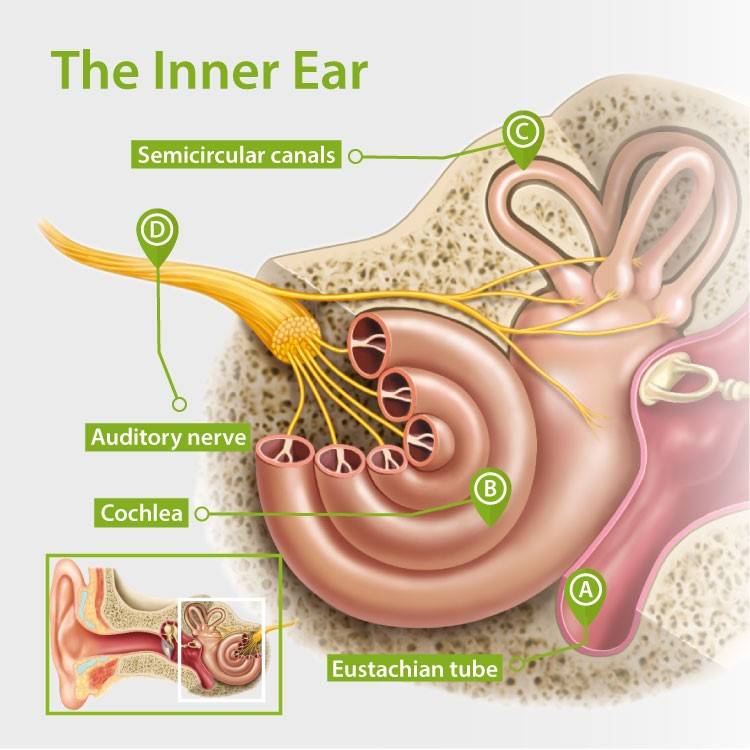
Within the inner ear is the cochlear, which is approximately the size of a pea and resembles a snail shell. The cochlear contains three canals filled with liquid; via one of these canals, the signals conducted into the liquid are directed to the tip and back via a second canal.
The central canal is home to The Organ of Corti (the actual organ of hearing), which is covered in thousands of tiny hairs.
Within the inner ear is the vestibular organ (responsible for your balance) and the cochlear, a snail-shaped organ approximately the size of a pea. The cochlear contains three canals filled with fluid that moves in response to the oval window's vibrations. It also includes a tiny structure called the organ of Corti (the actual organ of hearing) covered in thousands of tiny hairs (hair cells). Wave movements in the canals change depending on the frequency and are only triggered when the amplitude is particularly significant. Deeper tones move the hairs cells located further back in the cochlear, while higher tones trigger hair cells at the beginning of the cochlear. As you get older, these tiny hairs wear, which is one of the main reasons for age-related deafness.